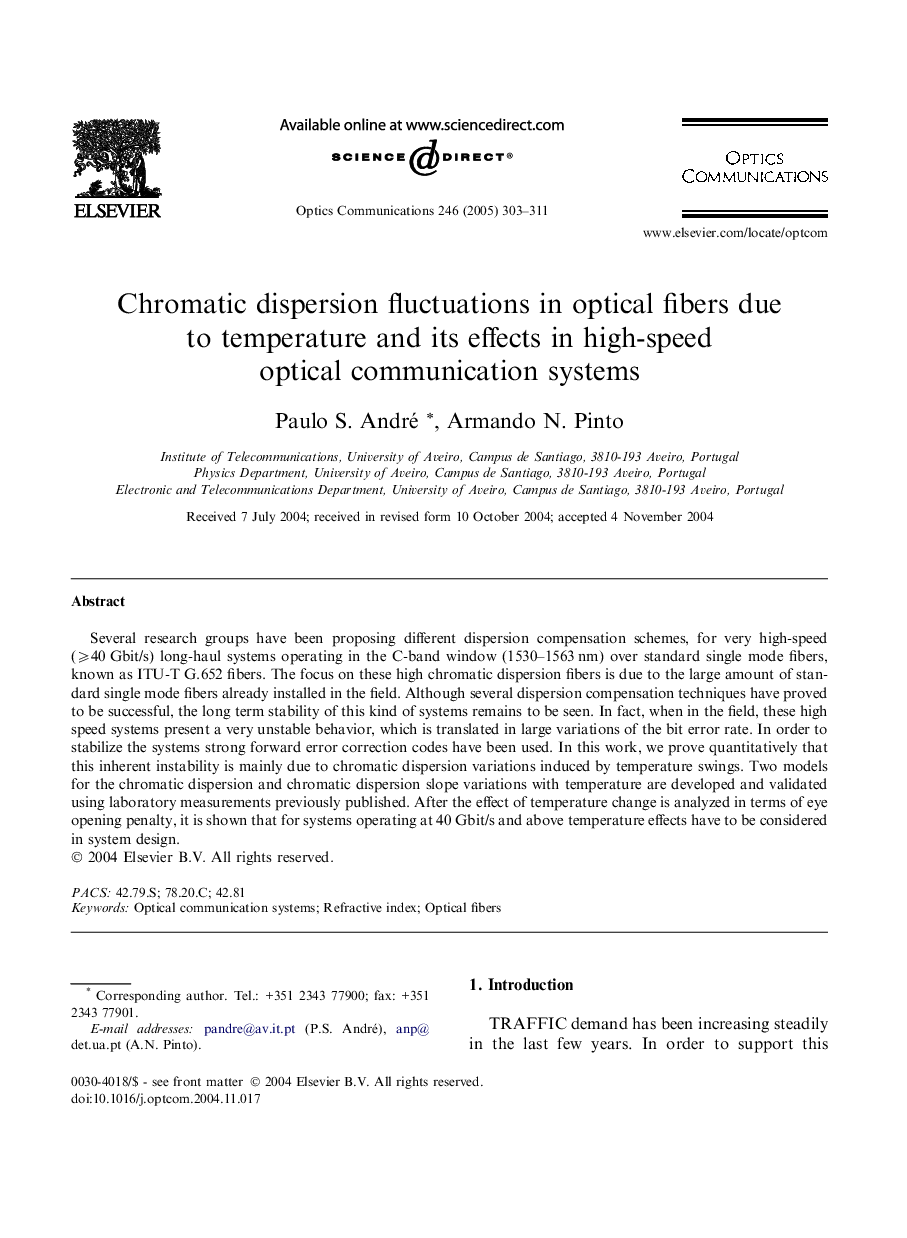| Article ID | Journal | Published Year | Pages | File Type |
|---|---|---|---|---|
| 9786072 | Optics Communications | 2005 | 9 Pages |
Abstract
Several research groups have been proposing different dispersion compensation schemes, for very high-speed (⩾40 Gbit/s) long-haul systems operating in the C-band window (1530-1563 nm) over standard single mode fibers, known as ITU-T G.652 fibers. The focus on these high chromatic dispersion fibers is due to the large amount of standard single mode fibers already installed in the field. Although several dispersion compensation techniques have proved to be successful, the long term stability of this kind of systems remains to be seen. In fact, when in the field, these high speed systems present a very unstable behavior, which is translated in large variations of the bit error rate. In order to stabilize the systems strong forward error correction codes have been used. In this work, we prove quantitatively that this inherent instability is mainly due to chromatic dispersion variations induced by temperature swings. Two models for the chromatic dispersion and chromatic dispersion slope variations with temperature are developed and validated using laboratory measurements previously published. After the effect of temperature change is analyzed in terms of eye opening penalty, it is shown that for systems operating at 40 Gbit/s and above temperature effects have to be considered in system design.
Related Topics
Physical Sciences and Engineering
Materials Science
Electronic, Optical and Magnetic Materials
Authors
Paulo S. André, Armando N. Pinto,
